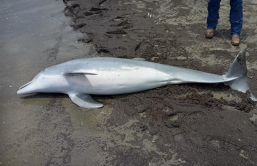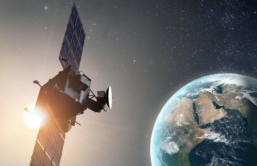After four failed attempts that span back to Feb. 24, SpaceX finally succeeded at launching a satellite into space Friday. However, the mission ultimately failed when the Falcon 9 rocket failed to land safely.
The mission's goal is to land the Falcon 9 on an autonomous drone ship that is floating in the ocean after its launch. So far, despite all of the failed attempts, the third one came closest.
Although the launch was flawless and the SES-9 commercial communications satellite was safely launched into orbit, the rocket exploded when it landed on the autonomous drone ship located several hundred miles off the coast of Florida.
Despite this failure, Elon Musk, CEO of SpaceX, claimed that the team "didn't expect this one to work" due to the use of a heavy satellite and the high required orbit, both of which put a lots of fuel demands on the launch, leaving little for the rocket's return to Earth and powered landing.
Rocket landed hard on the droneship. Didn't expect this one to work (v hot reentry), but next flight has a good chance.
— Elon Musk (@elonmusk) March 5, 2016
Musk believes that the next attempt has a good chance of success, despite the high level of heat possessed by the Falcon 9 rocket when it reentered the Earth's atmosphere. The next attempt will likely take place at the end of the month or sometime at the beginning of next month.
SpaceX has seen several setbacks over the past 14 months, one being the explosion of several of its rockets on touchdown, leading the team to continue searching for new ways to ensure a safe landing on its football-sized floating barge.
Achieving a barge landing may seem needlessly complex, but successfully doing so will give the company a great deal more flexibility when planning future missions, with the main goal of creating a reusable rocket system that will help push space travel into a realm that is both more affordable and more efficient.
On the bright side, the successful launch of the SES-9 is a success for the mission.
"SES-9 is an important building block in our strategy to grow in dynamic regions and four prime sectors: video, enterprise, mobility and government," said Chief Technology Officer of SES Martin Halliwell. "Co-located with SES-7, the new satellite will reach 22 million TV homes and is designed to deliver high-performing connectivity to homes, enterprises and institutions across Asia. With its dedicated mobility beams, it will help us to capture new opportunities in the buoyant markets for maritime and aeronautical connectivity."








